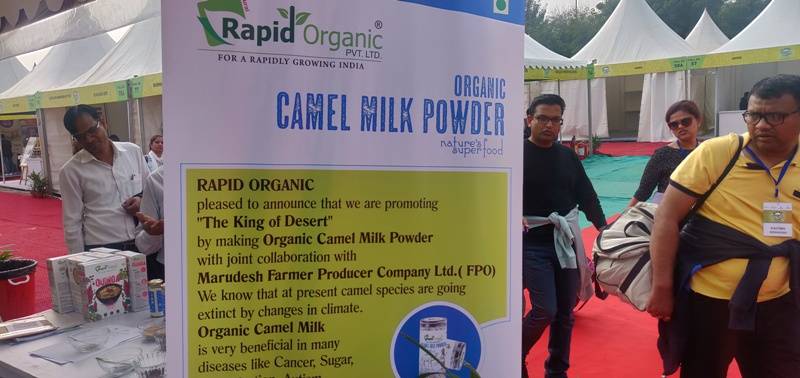
Consumption of milk for the benefit of bones for the calcium is a known phenomenon. From cow, buffalo, goat to camel, the availability is as per the area and Bedouin culture for consumption of camel milk. The camel milk is not available abundantly as the cow milk but it has more advantages than the cow milk. As far as the camel milk is concerned, it is more environment friendly, because camels do not need the massive necessary for goats and cows, thereby leaving the world a bit greener and with less methane gas.
Camel milk farming is increasing day by day irrespective of the expenses. It is has high price and is extremely expensive to harvest camel milk.
Camel milk curbs hunger; Camel Milk can be used as a supplement to mother`s milk; Camel milk has been linked to better insulin sensitivity due to its natural insulin content. Camel milk has been found to lower high fasting blood glucose levels and Hemoglobin A1c in diabetics. Camel milk calcium is more absorbable than that found other milks.
It may be difficult to find a reliable supply of camel milk in your area, but at some specialty food markets, Camel milk gives us an ideal nutritive mixture, to give our body better benefits in comparison to other common alternatives.

It also includes far higher levels of iron and Vitamin C, Camel milk has a wealth of nutrients, including lysozyme, lactoferrin, lactoperoxidase, immunoglobulin G. Consuming camel milk also caused a significant reduction in insulin doses in type 1 diabetic patients, according to a report published in the European Journal of Clinical Nutrition. Also, a study published by the International Journal of Endocrinology and Metabolism shows that camel milk has favorable effects on diabetes mellitus by decreasing blood sugar levels, as well as less fat reducing insulin resistance, and also improving lipid profiles.
Rapid Organic Pvt Ltd., of Rajasthan is soon launching the Organic Camel Milk Powder Giriraj Nagar, Purchase Manager, informed Krishi Jagran in the three days Organic Fair organized by the Food Processing Ministry along with the NIFTEM in the Jawahar Lal Nehru Ground.
As per records, the Asian Camel population decreased by 21 percent as between 1994 and 2004 from 4.5 million to 3.5 million population was recorded. It includes the combine populations of the one-humped (dromedary) camel and the two-humped camel which is known as Bacterian.
The prime resource for putting desert areas to long term productive use of camels, that`s why it is known as Ship of Desert.
Their population decline implies the abandonment of an indigenous and ancient method of extracting energy and food from arid lands without exerting pressure on precious groundwater resources. Loss of biodiversity, the shrinking of Asia’s camel herds indicates a loss of important biodiversity and animal genetic resources.
The continent’s camel population is not genetically homogeneous, but rather composed of a multitude of breeds adapted to diverse cultural, ecological and economic contexts.
The excellent milk potential depends upon some selective breeds; others have high growth rates and are suitable for meat production; yet others are swift and suitable for racing. The milk of camel is more expensive than other types of milk, as demand outweighs supply in most Western countries. The milk carries a high risk of harmful organisms, as its most often sold raw. Plus, some consumers have ethical concerns.
The two-humped Bactrian camel is used mostly as a working animal The lactation period is 14–16 months, and the amount of daily milk production averages 5 kg per animal; although some animals can give as much as 10–15 kg per day. Mostly, only about 2-3 kg are milked; the rest is suckled by the calf.










